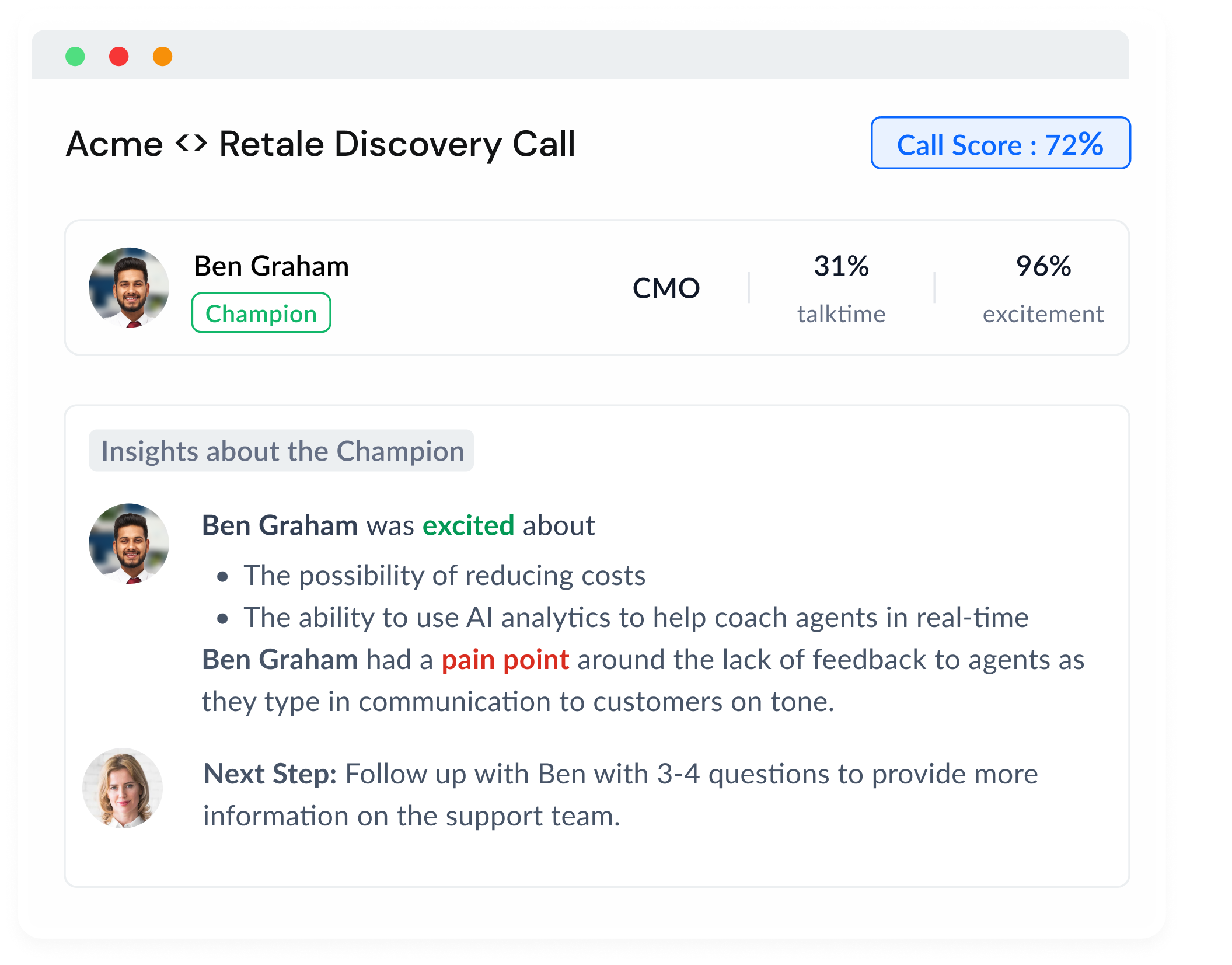Why cold calling is crucial for sales success
Cold calling is crucial for sales success for several reasons:
- Lead generation: Cold calling is an effective method to generate leads and build a pipeline of potential customers. It helps sales teams reach out to a large number of prospects who may not be aware of the products or services offered by the company.
- Direct communication: Cold calling allows sales reps to have direct, one-on-one conversations with potential customers. This enables them to address specific pain points, answer questions, and build rapport with prospects, increasing the chances of converting them into paying customers.
- Cost-effective: Cold calling is a relatively inexpensive way to reach out to prospects compared to other marketing strategies like paid advertisements or events. This makes it an attractive option for businesses with limited marketing budgets or those looking to maximize their return on investment (ROI).
- Customizable approach: Cold calling provides sales reps with the opportunity to tailor their pitch based on the prospect's needs and concerns. This personalized approach can be more effective than mass marketing campaigns that might not resonate with every potential customer.
- Immediate feedback: Cold calling allows sales reps to receive immediate feedback on their sales pitch and overall approach. This enables them to refine their strategy and improve their communication skills, increasing the likelihood of successful conversions in the future.
- Market research: Cold calling gives sales reps a chance to gain insights into the market and understand the needs of their target audience. This can help businesses identify new opportunities or areas for improvement in their products or services.
- Skill development: Mastering cold calling requires persistence, resilience, and excellent communication skills. As sales reps refine their cold calling abilities, they also develop valuable interpersonal skills that can be applied to various aspects of their professional lives.
By mastering the art of cold calling, sales teams can build strong pipelines, improve their sales skills, and ultimately drive success for their organizations.
Core Drivers for Cold Calling Success:
Motivating your team to maintain a high level of inputs (number of dials)
A. Techniques to inspire and engage your team:
a. Share a vision: Inspire your team by presenting a clear vision of what you want to achieve together. Remind them of the impact their efforts have on the company's growth and success.
b. Coach and mentor: Offer guidance, support, and feedback to help your team members grow and improve their cold calling skills. By being approachable and empathetic, you'll foster an environment where they feel motivated to excel.
c. Build camaraderie: Encourage team-building activities and create opportunities for your team members to connect with one another. A strong sense of unity will help boost motivation and make your team more productive.
B. Incentives and gamification ideas:
a. Reward top performers: Recognize and reward team members who consistently meet or exceed their dial targets. Incentives could include cash bonuses, gift cards, or even extra time off.
b. Leaderboard: Create a visual leaderboard to track the number of dials made by each team member. This will encourage friendly competition and motivate everyone to step up their game.
c. Dialing challenges: Organize short-term challenges or contests where team members compete to make the most dials in a specific time frame. Reward the winners with small prizes or unique experiences.
d. Progress tracking: Implement a system for tracking each team member's progress over time, with milestones and achievements to unlock. This can help keep them engaged and motivated to continually improve their cold calling skills.
By applying these techniques and leveraging incentives and gamification, you can inspire and engage your sales team, driving them to maintain a high level of inputs and ultimately achieve cold calling success.
Having high quality prospect contact lists
Focusing on the right prospects is crucial to the success of your cold calling efforts. To make sure your sales team is using their time effectively, it's important to create targeted lists of the most relevant accounts. Let's dive into the criteria and tools to help you find those perfect prospects.
A. Criteria for creating a targeted prospect list:
a. Ideal Customer Profile (ICP): Start by defining your ICP – a detailed description of the perfect customer for your product or service. Consider factors like company size, industry, location, and their specific pain points. This will serve as a guide for identifying potential prospects.
b. Buying signals: Keep an eye out for companies that show signs of interest or need for your offering. For example, did they recently launch a new product, expand to a new market, or face a significant challenge? These indicators can help you spot prospects that are more likely to be interested in what you have to offer.
c. Decision-makers: To increase the chances of successful conversions, focus on contacting key decision-makers within the organizations you target. These are the people who have the authority and budget to approve a purchase.
d. Warm leads: Prioritize prospects who have previously engaged with your company in some way, such as downloading a white paper, attending a webinar, or following your social media channels. These individuals are likely to be more receptive to your cold calls.
B. Tools and resources to find the right prospects:
a. LinkedIn Sales Navigator: This powerful tool helps you discover and connect with potential clients by providing in-depth insights into their job roles, company details, and connections. You can use it to create highly-targeted prospect lists and get notified about buying signals.
b. Industry directories and databases: Search for companies in your target market using industry-specific directories or databases like Hoovers, Crunchbase, or Data.com. These resources often include filters like company size, location, and revenue, making it easier to find your ideal prospects.
c. Social media monitoring: Keep an eye on social media platforms to identify companies and individuals discussing topics relevant to your product or service. Tools like Hootsuite or Mention can help you monitor conversations and spot potential prospects.
d. Trade shows and events: Attend industry-specific trade shows, conferences, or networking events where you can connect with potential prospects face-to-face. These gatherings can be a goldmine for finding leads that align with your ICP.
Remember, by focusing on the right prospects and creating targeted lists, you're setting your sales team up for success. So, get ready to watch those conversions soar as your team connects with the most relevant accounts!
Refining your sales pitch
Maximizing the outcome of your cold calling efforts is key to generating more meetings and sales. To help your team get more meetings from the same number of dials over time, here are some tips on refining your sales pitch, building rapport with prospects, and handling objections effectively:
A. Tips on refining your sales pitch:
a. Keep it short and sweet: Nobody wants to listen to a long-winded pitch. Capture your prospect's attention by delivering a concise, impactful message that highlights the key benefits of your product or service.
b. Personalize the pitch: Show your prospect that you've done your homework. Tailor your pitch by addressing their specific needs or pain points, making it clear how your offering can solve their problems.
c. Practice makes perfect: Encourage your team members to practice their pitches, both alone and with their peers. The more they practice, the more natural and confident they'll sound on the call.
d. Test and refine: Continuously test different elements of your pitch, and gather feedback from prospects and colleagues. Use this feedback to make improvements and optimize your approach.
B. Building rapport with prospects:
a. Start on a positive note: Begin the call with a warm greeting and a genuine smile. A positive attitude can set the tone for the entire conversation.
b. Listen actively: Show genuine interest in what your prospect has to say by asking open-ended questions and giving them ample time to speak. This will help you uncover valuable information and demonstrate that you truly care about their needs.
c. Find common ground: Look for shared interests, experiences, or connections with your prospect. This will make the conversation more engaging and help you establish a personal connection.
d. Be empathetic: Acknowledge your prospect's challenges and concerns, and express understanding for their situation. This will make them feel heard and help build trust.
C. Handling objections effectively:
a. Stay calm and composed: When a prospect raises an objection, don't get defensive. Instead, listen carefully to their concerns and respond with empathy and understanding.
b. Address objections head-on: Be prepared with well-researched answers to common objections. Offer relevant information and examples that demonstrate how your product or service can help them overcome their challenges.
c. Validate their concerns: Let your prospect know that you understand their concerns and that it's perfectly normal to have doubts or questions. This can help disarm any tension and create a more open dialogue.
d. Offer solutions: Whenever possible, provide a solution to their objection or propose an alternative approach that might better suit their needs.
By focusing on refining your sales pitch, building rapport, and handling objections effectively, you'll be able to maximize the outcome of your cold calling efforts, generating more meetings from the same number of dials over time. So, buckle up and watch your sales team's performance skyrocket!
Comparing Cold Calling Techniques
As the world of sales has evolved, so have the techniques used in cold calling. It's important to understand the differences between traditional and modern approaches to determine which might be more effective for your team. Let's take a look at both and explore how they stack up against each other:
Traditional Cold Calling Techniques:
- Scripted pitch: Traditional cold calling relies heavily on a scripted pitch that sales reps follow verbatim. This approach can be effective in terms of consistency but might come across as robotic or impersonal.
- Product-centric: Traditional cold calling tends to focus on the product or service being offered, often listing features and benefits without much customization or adaptation for each prospect.
- Quantity over quality: In the past, the emphasis was often on making as many calls as possible, with little regard for targeting the right prospects or building relationships.
- Limited channels: Traditional cold calling usually involved phone calls only, with no integration of other communication channels like email or social media.
Modern Cold Calling Techniques:
- Flexible approach: Modern cold calling techniques prioritize adapting to the prospect's needs and interests. While there might still be a general outline or framework to follow, sales reps are encouraged to customize their approach based on the prospect's unique situation.
- Solution-focused: The modern approach centers on identifying the prospect's pain points and demonstrating how your product or service can provide a solution. This creates a more compelling case for why they should engage with your company.
- Targeted outreach: Modern cold calling prioritizes targeting the right prospects, using tools like LinkedIn Sales Navigator or industry databases to find potential customers that match your Ideal Customer Profile (ICP).
- Multi-channel engagement: Today's sales reps use various channels, such as phone calls, emails, and social media messages, to connect with prospects. This multi-touch approach can help you reach a broader audience and increase the chances of engaging with potential customers.
- Building rapport: Modern cold calling places a greater emphasis on establishing rapport and trust with prospects through active listening, empathy, and genuine interest in their needs.
- Data-driven decisions: Sales teams today use analytics and tracking tools to monitor their cold calling performance and make data-driven decisions to refine their strategies and improve outcomes.
The path to cold calling mastery
In conclusion, modern cold calling techniques tend to be more dynamic, personalized, and solution-focused compared to traditional approaches. They prioritize building rapport, targeting the right prospects, and integrating multiple channels of communication. By incorporating modern techniques into your cold calling strategy, you can enhance your sales team's effectiveness and ultimately drive better results.
And there you have it, folks! Our thrilling ride through the wild world of cold calling has come to an end. We've explored the art of motivating our dial-happy teams, discovered the secret recipe for finding the perfect prospects, and navigated the twists and turns of maximizing outcomes on those icy calls. We even took a time-traveling trip to compare the old-school traditional methods with the shiny, new-age modern techniques.
So, what's the takeaway? Simple: Adapt, personalize, and keep the conversation real. Embrace the evolution of cold calling and give your sales team the tools, skills, and confidence to leave those prospects feeling warm and fuzzy instead of, well...cold. As you venture forth into the world of sales, remember to keep it cool, stay quirky, and, most importantly, never stop dialing! Happy cold calling, my friends! 📞😎🚀















.png)





